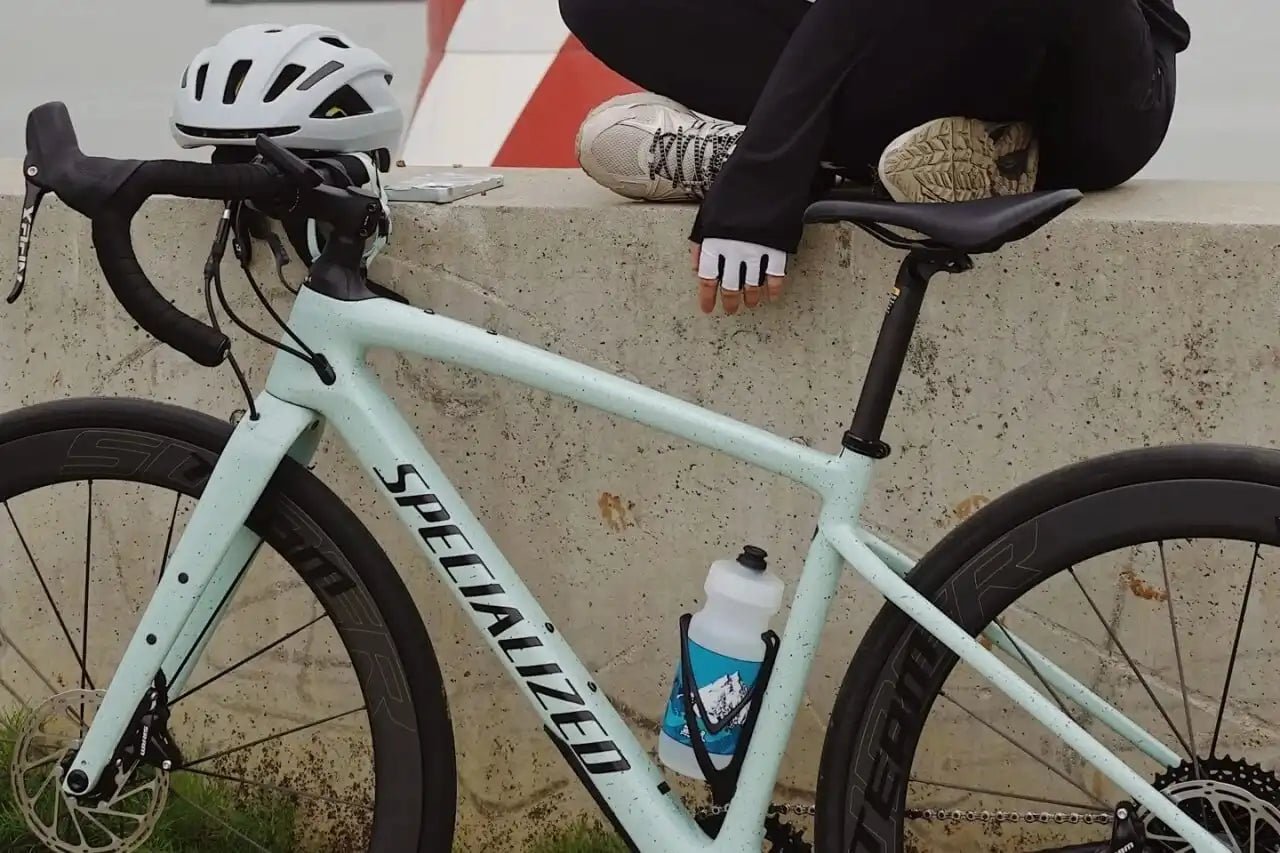Wrist pain is a common problem when riding. Although your lower body bears most of the aerobic exercise when riding, your wrist also supports most of the weight of your upper body on the handlebars. When you have wrist pain or hand numbness, don't take it lightly. If these problems are not taken seriously, they may cause nerve damage over time.
Insufficient core strength, weak upper limb strength, and incorrect riding posture are common causes of wrist pain. In addition, improper bicycle adjustment is also a common cause of wrist pain when riding, which is particularly easy to be exposed to during long-distance riding.
In this article, Superteam shares suggestions for preventing and relieving wrist pain.

How to identify the cause of pain
If you already feel wrist pain while riding, first pay attention to the relevant situation. If it hurts at the beginning of riding, you may need to make a bigger adjustment, such as correcting the position of the cushion. If your wrist starts to hurt after riding for five hours, you may just need to adjust your hand position.
Like most people, you tend to endure pain habitually but don't ignore any obvious tingling and local pain. Muscle soreness, fatigue, and stress from high-intensity training are all normal, but pain does not fall into this category. Localized or asymmetrical joint pain is a strong signal of improper posture. At this time, please pay attention!
Prevention tips
1. Check the wrist position

Riding posture is important, and the position of the wrist when riding is also critical. Many people mistakenly believe that the wrist should be stretched straight when riding, just like a karate cut. But in fact, this posture puts pressure on the wrist. It increases the pressure on the nerves and tendons in the carpal tunnel, which may cause wrist pain. In addition, the carpal tunnel refers to the narrow passage from the wrist to the palm.
The correct posture is that the wrist should maintain a dorsiflexion angle of 15 to 20 degrees, which can open the carpal tunnel and reduce compression. If the dorsiflexion angle is too large, wrinkles can be seen on the skin, which means that the dorsiflexion is too much, which will compress the carpal tunnel again.
2. Adjust the bicycle at various angles
Another common cause of wrist pain when riding is improper bicycle adjustment. If you ride in the wrong position, you are likely to put too much of your weight on your wrists and hands instead of on the saddle, which will inevitably cause problems in the long run.
Key points for bike fit include:
1. Check the saddle

If the saddle is too high or the front end is tilted too much, you will end up with too much weight on your wrists. Generally speaking, the saddle should not be tilted more than 5 to 6 degrees, otherwise, it will increase the pressure on your wrists. Of course, the most accurate value will depend on your physical condition and the saddle you use. We also have a very good saddle that is worth trying!
2. Pay attention to the handlebars
If you have to overextend your arms to grab the handlebars, then this will inevitably put a lot of pressure on your wrists, which will cause wrist pain. Therapists say that if you often observe the angle between your shoulders and torso, you should know that the shoulders themselves should be at a 90-degree angle. Once you exceed this angle, you will eventually straighten your elbows and cause your wrists to bend backward too much.
Speaking of handlebars, if your hand placement or hand position is significantly wider than your shoulders, it's easy to turn your wrists outward, which puts the weight of your hands on the pads of your palms. That's where the ulnar nerve runs, so you'll feel tingling and numbness in your pinky and ring fingers. Also, if you have to turn your hands forward a lot to hold the brakes and shifters, it will cause pain.
Although you can rotate the brake handles slightly, the handlebars themselves don't have much room for adjustment. You can solve some of these problems by changing your riding technique and posture a little, but if your handlebars don't improve your body's natural curves and instead cause harm, then you should buy new handlebars.
3. Seek help from a professional
One of the best ways to avoid the above problems is to adjust the bike to your body from the beginning. Some riders go directly to their trusted mechanics to develop a bike-fitting plan, determine their riding posture, and then buy a bike based on the fitting results. Other riders prefer to buy a bike they like first and then go back to fit it. Both are fine, and we believe you will make the choice that suits you.

A properly adjusted bike will allow you to ride as long or short as you like without any pain points—even seemingly minor wrist pain.
4. Other Ways to Avoid Wrist Pain on Cycling
Cycling conditions, such as rough mountain roads and gravel roads, can cause wrist pain by putting extra pressure on the wrists due to frequent bumps and vibrations. In these cases, Schmidt recommends not having too high tire pressure, using tubeless tires, and keeping the air pressure around 15 or 20 pounds to enhance shock absorption.
In addition, carbon fiber handlebars are better at absorbing high-frequency vibrations, and using gel handlebar tape can also alleviate bumps to a certain extent.




Laisser un commentaire
Tous les commentaires sont modérés avant d'être publiés.
Ce site est protégé par hCaptcha, et la Politique de confidentialité et les Conditions de service de hCaptcha s’appliquent.